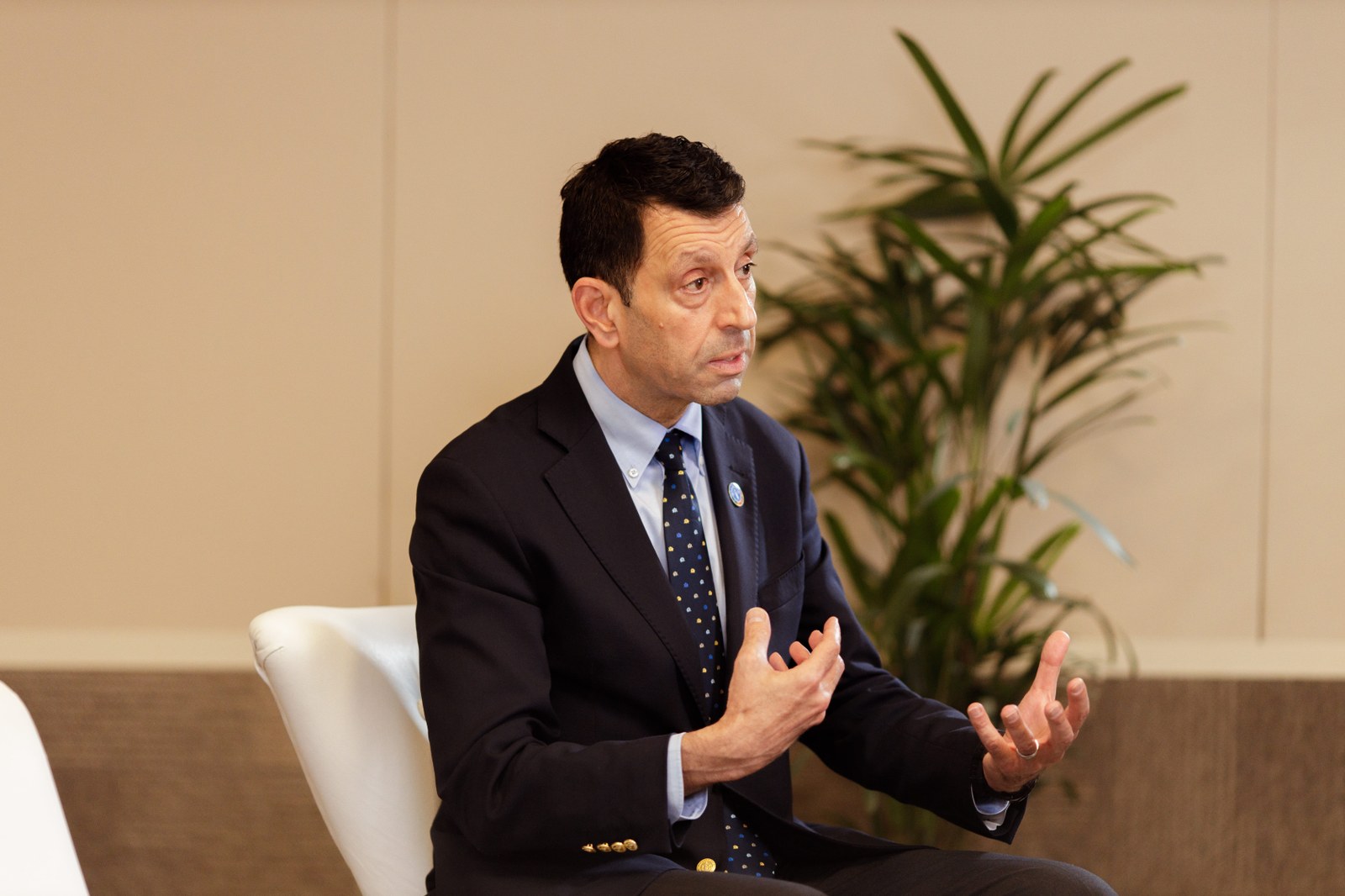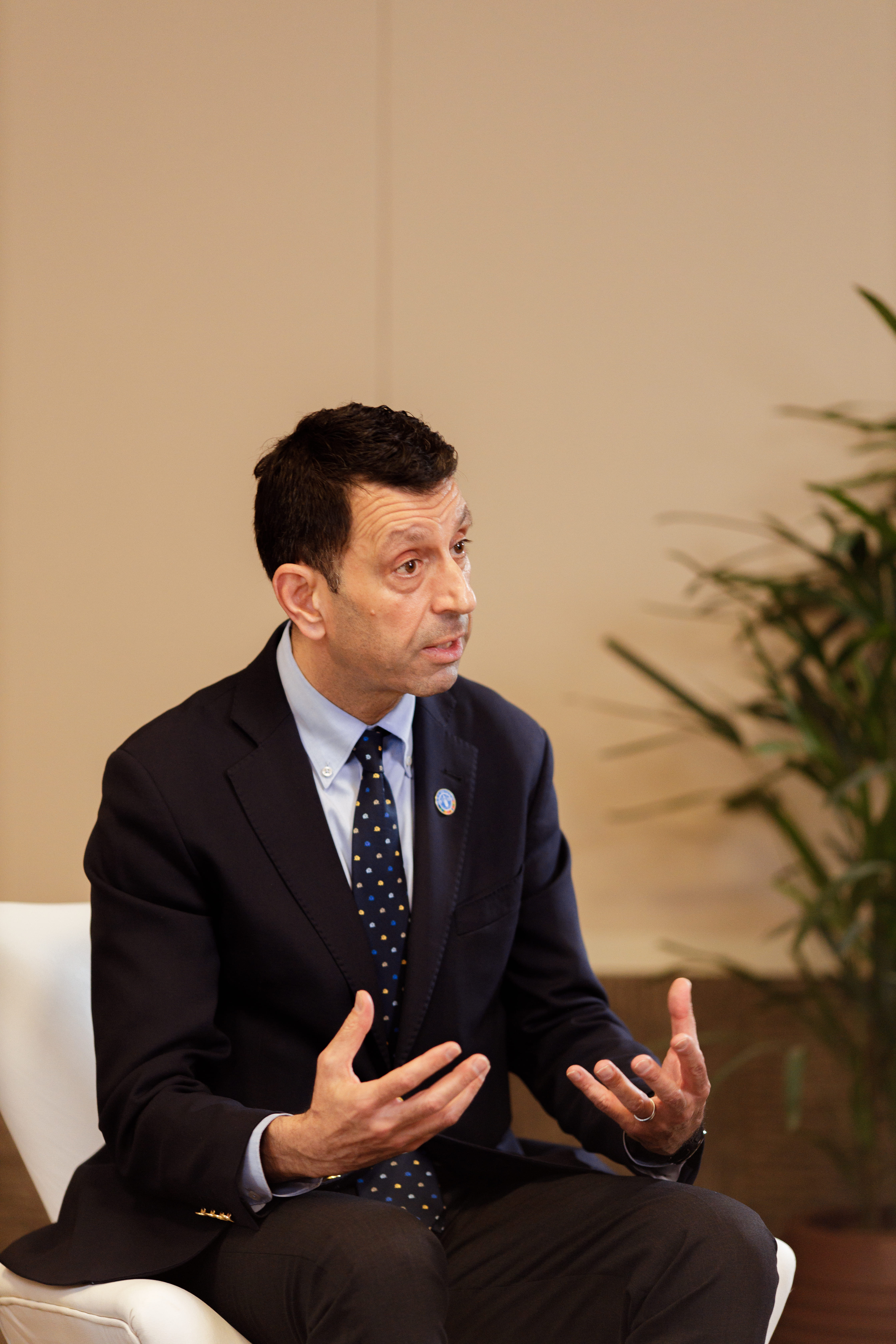"Climate change and conflict are the main drivers of food insecurity," says FAO Director
Kaveh Zahedi, Director of the FAO's Climate and Biodiversity Division, highlights the challenges agriculture faces in ensuring food security amid climate change in an exclusive interview for the COP30 website

By Inez Mustafa | inez.mustafa@presidencia.gov.br
Kaveh Zahedi leads the Food and Agriculture Organization of the United Nations (FAO) agenda on agriculture and food insecurity at COP30 (United Nations Climate Change Conference).
He explains that climate change contributes to the high number of hungry people in the world. Floods and droughts reduce both yields and production capacity, decreasing earnings. Thus, through new and existing technologies, it is possible to build resilience and adaptation to climate change in agriculture, while at the same time reducing greenhouse gas emissions.
To transform agriculture and food systems into sustainable and resilient ones, funding of 1.3 trillion dollars a year is needed, adds the director. In addition to funding, the diversity of farming methods and the genetic diversity of food must be promoted, guaranteeing greater food security. According to Zahedi, local communities are the guardians of it.
The expert also talks about the importance of the Global Alliance Against Hunger and Poverty, launched at the G20 in Brasil, and his expectations for COP30 in the country. Zahedi was in Brasília in March to participate in the Air and Climate Coalition.
Climate change and food insecurity connection
Kaveh Zahedi: Climate change has a major impact on food security. Climate change and conflict are two of the main drivers of food insecurity. Today, more than 700 million people still suffer from hunger, and climate change is a major cause of this. Why is that? Because the climate crisis is leading to extreme, weather events that damage agriculture. Floods, droughts all reduce yields and production capacity. Climate change is also increasing pests and diseases, again having an impact, reducing gains. We also need to look at emissions of short-lived climate pollutants, such as black carbon and ground-level ozone, which impact productivity and yields, as well as nutrients contained in food. In short, a big impact.
It is estimated that USD 3.8 trillion has been lost in global agricultural and livestock production due to climate disasters over the past 30 years, according to data from the FAO report “The Impact of Disasters on Agriculture and Food Security”. This total equates to an average loss of USD 123 billion per year, or 5% of annual agricultural gross domestic product, the study concludes.
Mitigating and Adapting Food Production to Climate Change
Kaveh Zahedi: "We need to help build resilience and adaptation to climate change in agriculture while reducing greenhouse gas emissions. It is not one or the other. We have approaches, technologies, and ways of food production that can help build resilience to climate change and that can help with adaptation and emissions reduction. We are talking about more sustainable livestock, aquaculture, and agroforestry, restoring degraded agricultural lands. We can promote actions that benefit climate, in terms of resilience and adaptation, helping with mitigation and, most importantly, with the challenges of food security.
The role of technology in promoting food security
Kaveh Zahedi: To promote climate change mitigation and adaptation, many technologies need to be improved and, of course, others need to be developed. For example, we need to look at simple agricultural practices, such as rice farming, which is a major emitter of methane; but if we change the way we grow crops, instead of flooding the fields, we can have an approach of alternating flooding and drying. This reduces the amount of emissions from rice farming. If we look at livestock farming, if we change the way we feed livestock and improve their health, we will be able to reduce emissions as well. I think we have a lot of technology that can help, but of course, not everything has to be high-tech. Some of these technologies can help us, for example, early warning systems so that farmers know when there is a flood, drought, how they can anticipate climate change; but there is a mix of high-tech and low-tech that will help us build resilience, reduce emissions, and of course, promote food security.
Risk and Vulnerability Monitoring and Simulation System
Formulated as a part of the National Climate Change Adaptation Plan, this tool was developed to assess, forecast, and mitigate the impacts of extreme weather events and other threats on agriculture. It integrates climate data, agronomic models, and geospatial information to support decision-making by farmers, governments, and insurance companies.
The importance of finance to promote more sustainable agriculture and food systems

Kaveh Zahedi: Climate finance is essential, but it is not the only finance. We know that to transform agriculture and food systems, you need about USD 1.3 trillion per year to transform agriculture and food systems into sustainable and resilient systems. Not all of that will come from climate finance, but what we have found through our work is that climate and environmental finance, if well targeted, is a real driver to change the way we invest in agriculture and food systems to make them more sustainable. It is also a real driver to redirect countries' finances because it is, in a sense, buying some of the initial risk of the changes that need to be made in the systems that will make financial sense in the future. Countries have pledged to increase climate finance from USD 300 billion to USD 1.3 trillion under the climate framework. What we need to ensure is that enough of this money goes to solutions in agriculture and food systems. Right now, the money that goes to these sectors is a small fraction, maybe 5% of total climate finance. We need to increase that because that is where we can get the biggest return on investment.
Contributions of traditional and local farming systems to food security
Kaveh Zahedi: Food security and zero hunger are at the core of FAO's mandate. It is the essence of the organization's existence. Part of that is the way local communities traditionally produce food. We have seen a real reduction in the genetic diversity of food. We have a very limited food supply. Some crops are undervalued. Maybe some crops were used for food production years ago, like millet, but somehow they have gone out of fashion, so we are reducing the genetic diversity of the food that we eat. This is a risk because with climate change, we do not know which crops will be better than the others will. The more diversity we have, the more food security we have. And who are the guardians of that diversity? Mostly local communities. We highlight this through the Globally Important Agricultural Heritage Systems (GIAHS) program, which celebrates traditional agriculture and the communities that have been stewards of agriculture for hundreds of years, building resilience, adapting to change, and using biodiversity sustainably.
In 2020, the Traditional Agricultural System (Sistema Agrícola Tradicional/SAT) of Serra do Espinhaço (MG) became the first GIAHS recognized by FAO in Brasil. This system is a quilombola cultural heritage that integrates ancestral knowledge with the biodiversity of the Cerrado biome, using sustainable techniques such as crop rotation and agroecological management. This system includes the production of native seeds and medicinal plants and promotes climate resilience and food self-sufficiency.
SATs are a set of ancestral practices used to manage land and biodiversity. They are found in several indigenous territories, quilombolas, and traditional communities.
Quilombolas are communities formed by African descendants who were enslaved in Brasil and who resisted slavery from the colonial period until the 19th century by creating quilombos - spaces of freedom and collective organization.
Global Alliance against Hunger and Poverty, promoted by Brasil at the G20, in the framework of COP30
Kaveh Zahedi: This alliance is key because it brings the issue of food security to the forefront. As I said at the beginning, how can we live in a world where 730 million people are still hungry? The Alliance addresses one of the key development issues facing the world today. And it is an accelerator because it puts on the table the public policy packages that can encourage change, whether it is helping farmers with insurance systems or other policies that can help us build food security. The Alliance is a key kind of policy driver, therefore, in this fight against hunger. With COP30 taking place in Brasil, it is clear that agriculture and food systems will play a central role because Brasil is at the forefront of sustainable agriculture in many ways. For example, the restoration of degraded agricultural lands is an important initiative in Brasil. We need to identify these kinds of initiatives to put them on the table at COP30 because of the attention that this event attracts and to be able to get the necessary investments.
FAO's expectations for COP30
Brasil will host COP30; we hope to find agreements on climate, agriculture, and Zero Hunger (Fome Zero). How can we advance these agendas simultaneously? It is not one or the other, but we also cannot forget that the conference will take place in the Amazônia, in Belém do Pará. So we hope that more attention is paid to the role of forests in the fight against climate change, including the interventions that we have seen bring real results, such as agroforestry.
English version: Trad. Bárbara Menezes
Proofreading by Enrique Villamil
